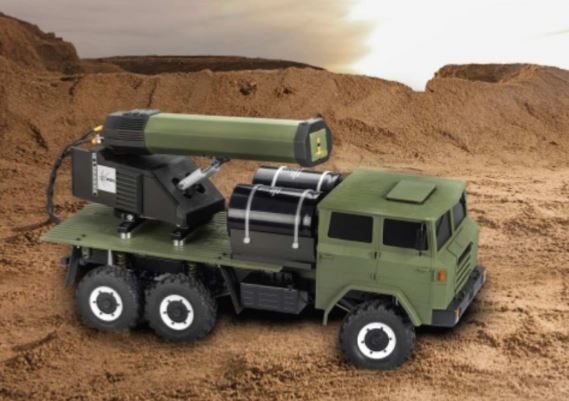Once upon a time… The aim is to create a weapon that would harness the power of electromagnetism, launching projectiles with unparalleled speed, accuracy, and destructive force. Nexter/KNDS is in charge of coordinating a European project.

Research began by designing a compact railgun, which would serve as the foundation for an electromagnetic weapon. Railguns utilize electromagnetic forces to propel projectiles along two parallel rails, eliminating the need for traditional chemical propellants. The concept was not entirely new, but scientists sought to push the boundaries of what was achievable. They carefully engineered a series of powerful electromagnetic coils, precisely aligned along the rails. These coils were made of a superconductive material, capable of carrying enormous amounts of electrical current without resistance. By rapidly energizing the coils, an intense magnetic field was generated, propelling a conductive projectile along the rails at extraordinary speeds.
However, the initial prototypes faced significant challenges. The massive electrical currents required to generate the magnetic fields caused the coils to overheat, leading to rapid degradation and system failures. Undeterred, the scientists tirelessly worked to overcome this obstacle. They developed advanced cooling systems that circulated liquid nitrogen through the coils, maintaining their temperature at cryogenic levels and preventing catastrophic failure.
As the project progressed, the team of researchers faced another obstacle: projectile guidance. They realized that without a reliable guidance system, the incredible velocity of the projectiles ejected at a speed of at least Mach 5 and traveling a distance of up to 200 km would render them virtually impossible to control. They implemented cutting-edge technologies, integrating miniature gyroscopes, accelerometers, and advanced algorithms to ensure precision targeting. These innovations allowed the electromagnetic gun to track and adjust the trajectory of each projectile in real time, compensating for external factors such as wind and gravitational forces.
Once the prototype was complete, it was time for the ultimate test. Deep within the secured laboratory, a massive underground firing range was prepared. The team, filled with anticipation and excitement, loaded the electromagnetic gun with a specially designed projectile, crafted to withstand the tremendous forces it would endure during launch.
With a flick of a switch, the electromagnetic coils hummed to life. The gun emitted a pulsating hum as the immense electrical current surged through the coils. The projectile, locked in place between the rails, awaited its moment. Suddenly, the electromagnetic gun released a tremendous burst of energy, propelling the projectile forward with a thunderous roar. In the blink of an eye, the projectile streaked across the firing range, punching through solid steel with ease. Its incredible speed and kinetic energy left a trail of destruction in its wake, demonstrating the immense power of the electromagnetic gun.
The European Commission designated the ISL to coordinate the PILUM program, aiming to demonstrate the potential of electromagnetic cannons for long-range artillery support. The program involved various participants, including Naval Group, Von Karman Research Institute, Diehl Munition Defense, Eplomet, and ICAR. The success of the program led to the inclusion of the THEMA project in the European Commission’s recent research projects, with Nexter selected as the coordinator. THEMA aims to develop critical components of an electromagnetic cannon for land-based platforms with a range of about thirty kilometers. Multiple countries, including Italy, Belgium, Cyprus, Bulgaria, Estonia, Portugal, and Germany, are also participating in THEMA.
